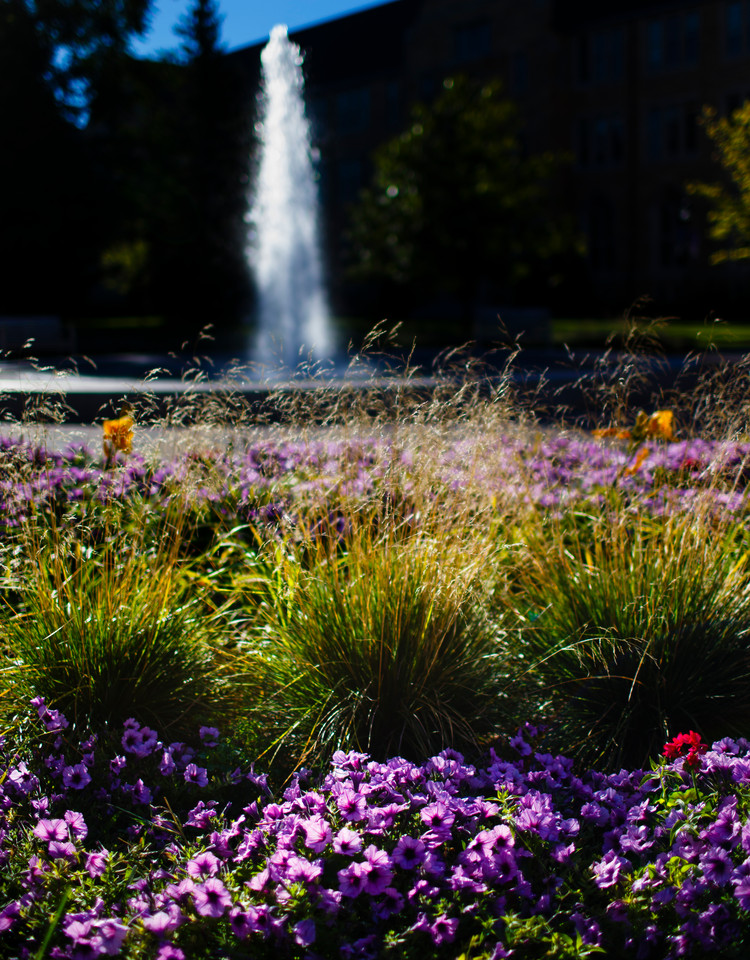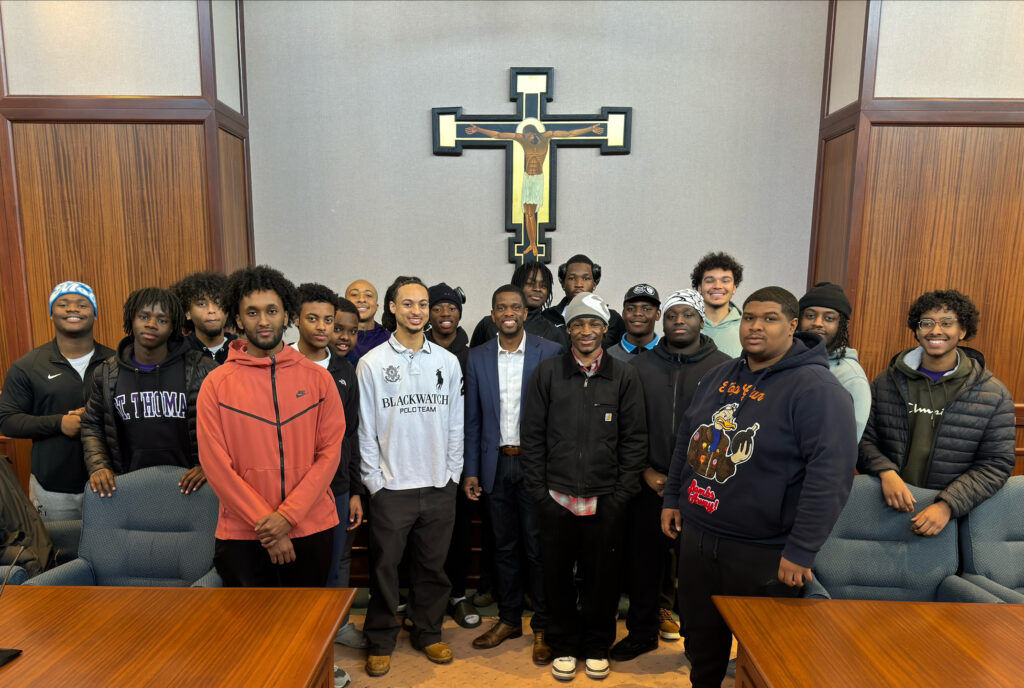More than a hundred St. Thomas community members gathered in O'Shaughnessy Educational Center auditorium for April’s College of Arts and Sciences Teach-in Tuesday, “50 Years Since Stonewall: Lessons in Resilience, Leadership, and Pride from LGBTQ+ People of Color.”
Psychology professor Roxanne Prichard delivered the keynote address, spotlighting the parallel stories of Anna Pauli Murray and Malcom Michaels Jr. (who changed her name to Marsha P. Johnson in 1966) in tracing events surrounding female and LGBTQ discrimination and hard-fought legal rights.
“It’s an issue that is long before us and will continue,” Prichard said. “These issues are ongoing and will be ongoing. We are part of a pivotal time in history.”Prichard pointed to the importance of three themes – intersectionality, past as prologue and the need to learn from the oppressed – when considering a topic like the years before and after Stonewall. (Intersectionality is the interconnected nature of social categorizations such as race, class and gender as they apply to a given individual or group, regarded as creating overlapping and interdependent systems of discrimination or disadvantage.) Stonewall was a series of riots in New York in June and July, 1969, by the LGBTQ community and supporters after years of discrimination, harassment and arrests. As Associate Dean Lisa Waldner pointed out in the question-and-answer portion of the event, the Stonewall riots were a continuation of many important moments in the gay rights movement, but it was an especially galvanizing force and directly led to the creation of organizations like Gay Liberation Front and Street Transvestite Action Revolutionaries.
Johnson played an important role throughout this time, too: Prichard detailed how she became a drag queen in New York in a time (1950s and 1960s) when to do so meant being constantly arrested (Solicitation of homosexual relations was illegal in the city, and there was a criminal statute that allowed police to arrest people wearing less than three gender-appropriate articles of clothing). An outspoken advocate for the homeless, Johnson sought refuge, like many, at places such as the Stonewall Inn, which was run by the mafia and existed relatively undisrupted thanks to bribes to police. However, on the early morning of June 28, 1969, police raided the bar without warning and began roughly handling and arresting patrons, who eventually fought back and forcefully declared their humanity over the following days. It was, as Prichard said, a turning point, highlighted by a quote from the deputy of the Public Morals police officers tasked with enforcing laws discriminating against the LGBTQ community.
“For those of us in Public Morals, after the Stonewall incident things were completely changed,” he said. “They [the LGBTQ community] were suddenly not submissive any more. They now suddenly had gained a new type of courage. And it seemed as if they didn’t care anymore about whether their identities were made known. We were now dealing with human beings.”
Prichard underscored Johnson's experience throughout all this as crucial to note because of her lived intersectionality; her representation of past as prologue in tracing continued legal and social discrimination against the LGBTQ+ community; and her story representing an oppressed group of people. (Prichard asked at the end of the presentation how many people had heard stories like those of Johnson and Anna Pauline Murray; very few hands went up.)
Previous to discussing Stonewall and Johnson, Prichard outlined the life of Murray, who faced extensive discrimination as a black woman. Murray was an outstanding student and scholar, and was nurtured in New York City during the height of the Harlem Renaissance with mentors such as Langston Hughes. Despite the support of such influential people (including Eleanor Roosevelt), Murray was barred from attending law school at the University of North Carolina Chapel Hill because of her race, and from Harvard University because of her gender. (Instead she entered Howard University School of Law and graduated at the top of her class, going on to author “States Laws on Race and Color” in 1951 on behalf of the Women's Society of Christian Service in the Methodist Church, which Thurgood Marshall called the "bible of civil rights law" and used in Brown v. Board of Education.)
Murray dedicated her life to advocating for civil rights for both people of color and women (She was arrested for refusing to give up her seat to a white person in 1940, 15 years before Rosa Parks famously did the same, and organized lunch counter sit-ins as early as 1944). She was a founding member of the National Organization for Women, was appointed by President John F. Kennedy to the President’s Commission on the Status of Women, and was a board member of the American Civil Liberties Union Board of Directors. She also became the first African-American to receive a law degree from Yale University, and in 1973 became a reverend within the United Episcopal Church of North America.
It was not until Murray's death and the release of her autobiography that it was made public that she did not feel like a woman and that she partnered with women throughout her life, including a 17-year partnership. Murray went as far as burning the letters she exchanged during this relationship in order to keep it secret.
Again, Prichard highlighted how Murray’s lived experience of intersectionality – the discrimination she faced as a black person and as a woman, as well as the forced denial of her gender identity and sexuality – stands out as an important story to understand.







